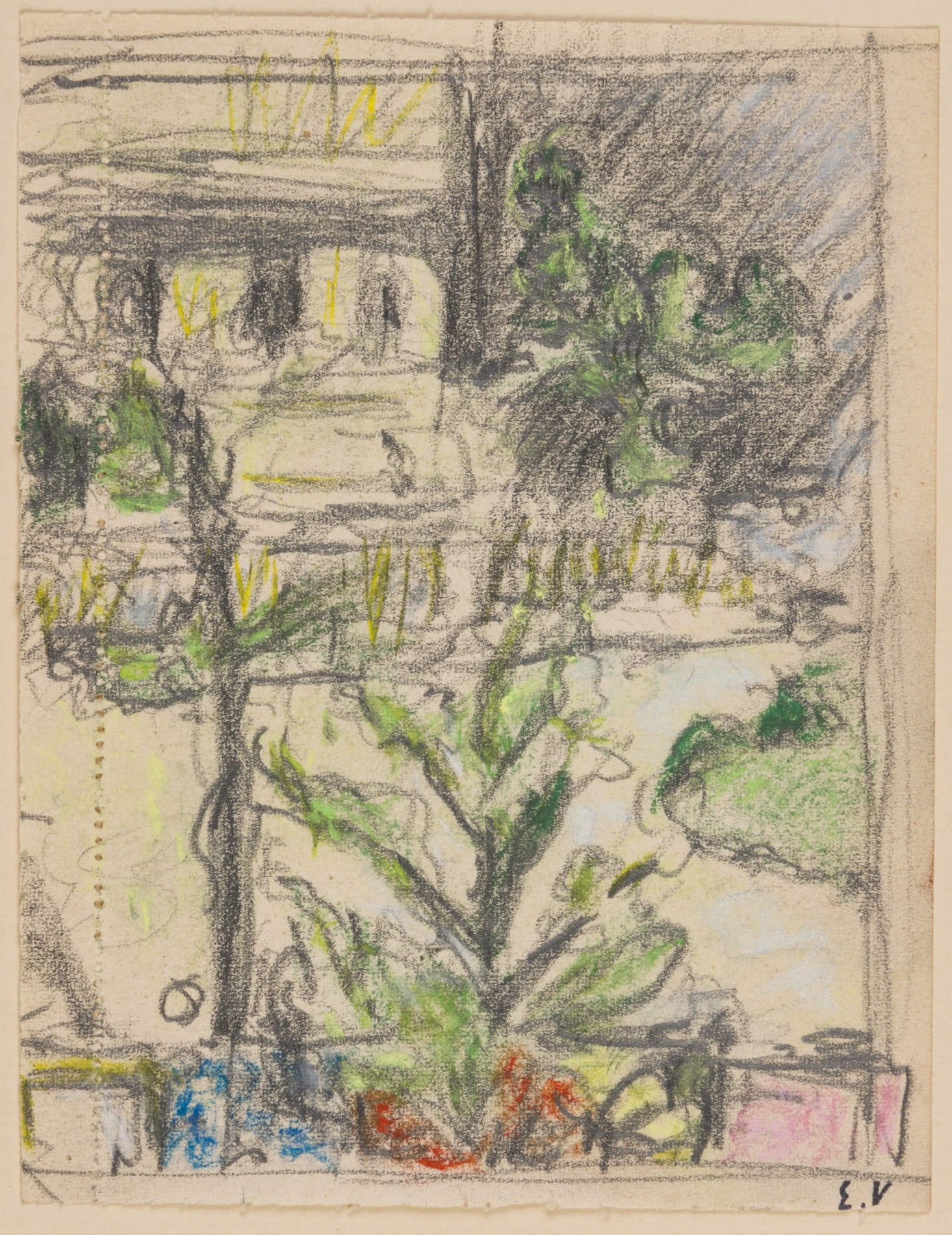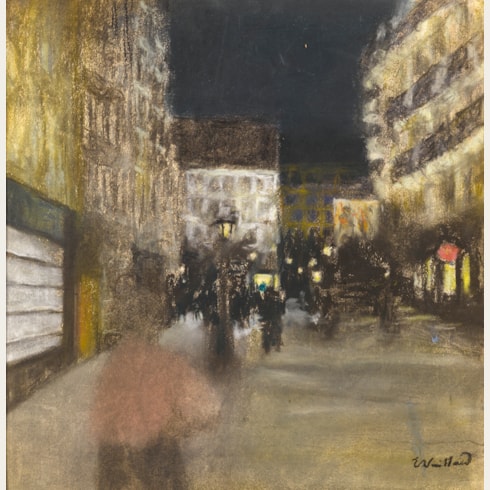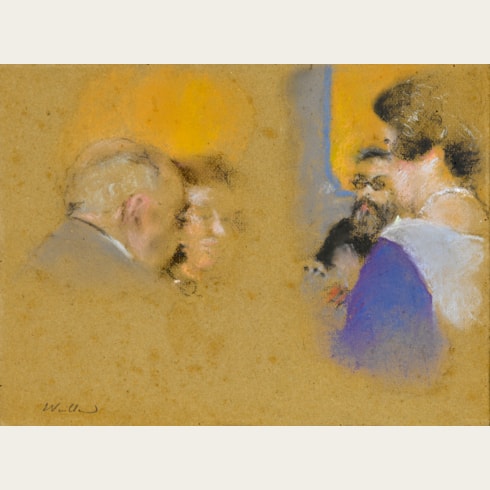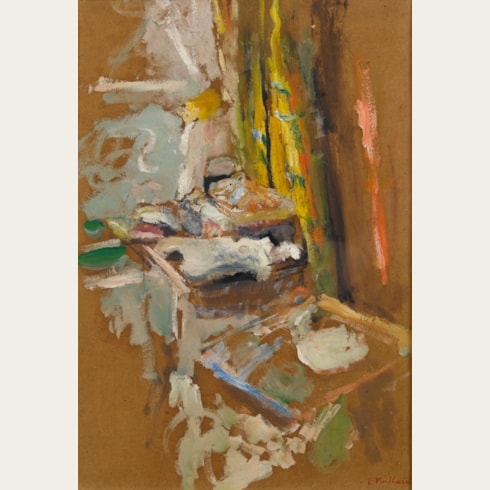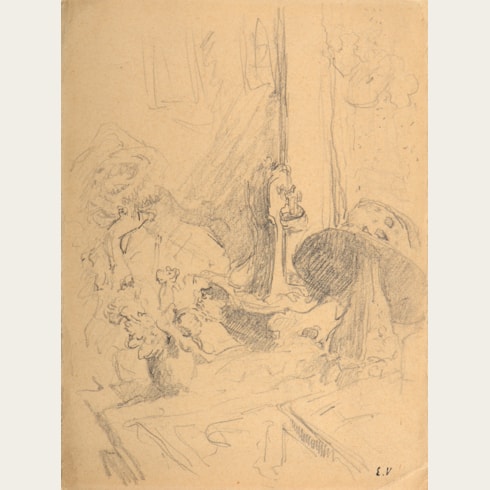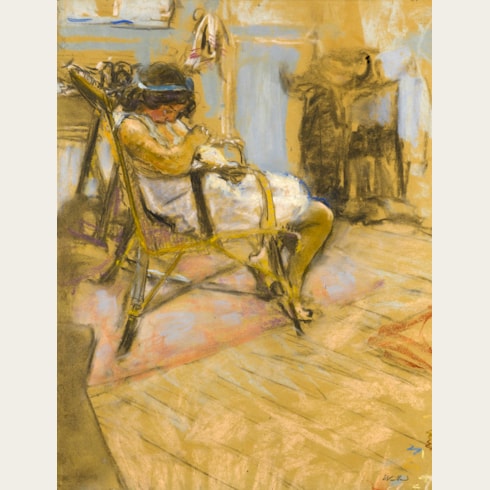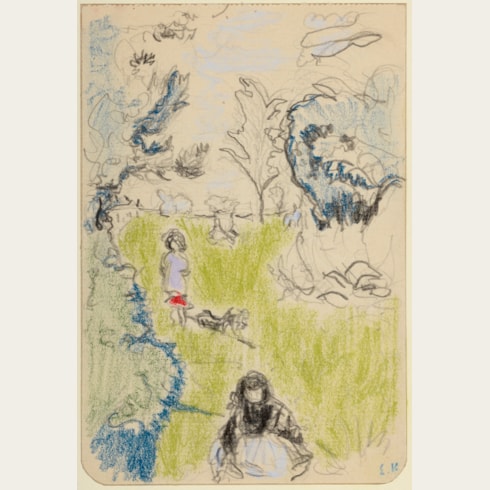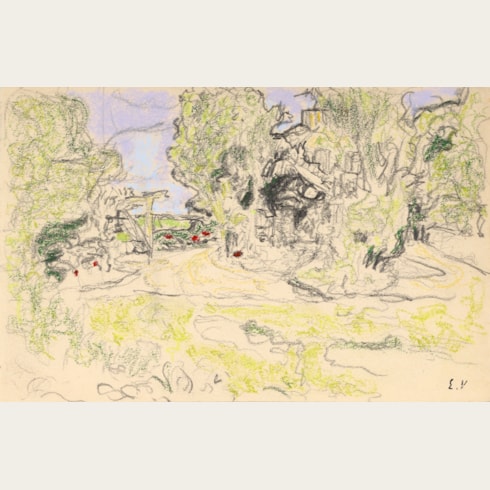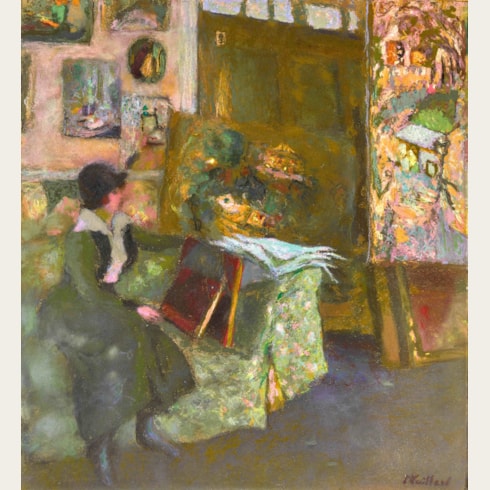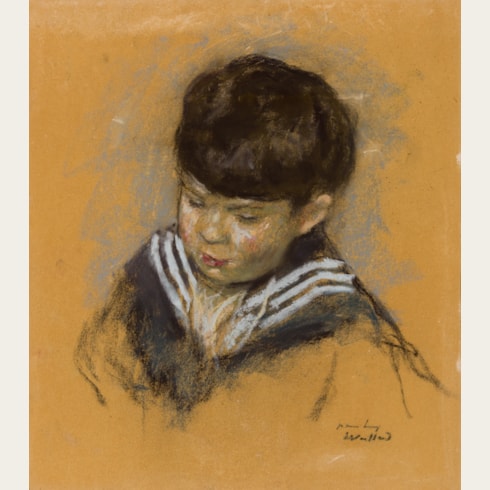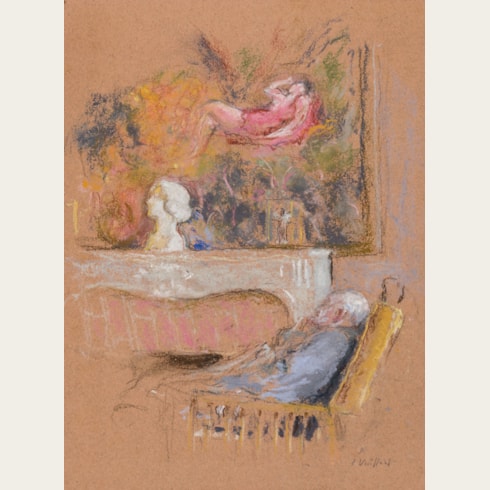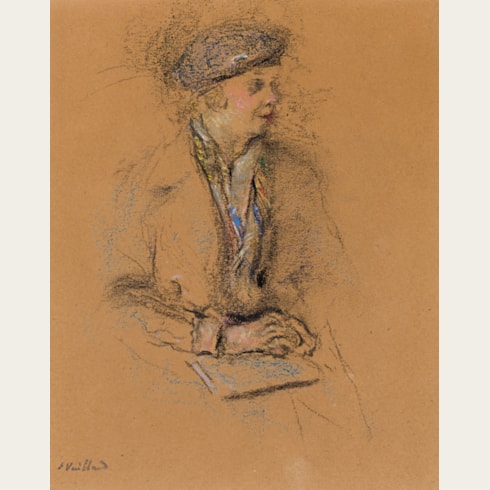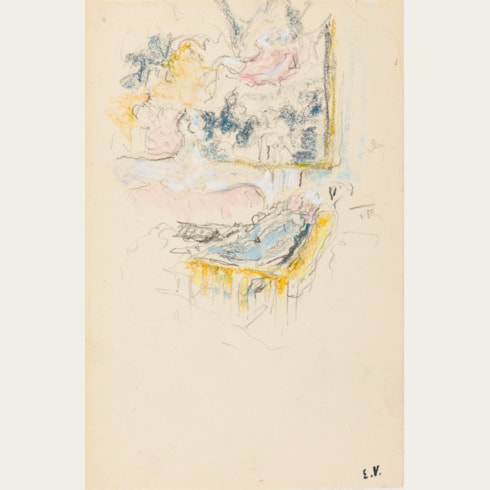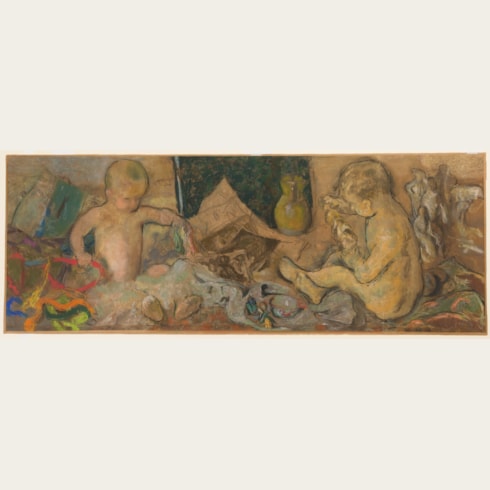Edouard VUILLARD
(Cuiseaux 1868 - La Baule 1940)
The Square Berlioz on the Place Vintimille, Paris
Stamped with the Vuillard atelier stamp (Lugt 909c) at the lower right.
133 x 102 mm. (5 1/4 x 4 in.)
In the summer of 1908 Vuillard and his mother settled into a fifth-floor apartment on the rue de Calais, close to the Place Vintimille (today the Place Adolphe-Max), in the 9th arrondissement of Paris. From his window, Vuillard began producing paintings, pastels and drawings of views of this picturesque small square, and the oval public garden, known as the Square Berlioz, at its centre. (One of the first depictions of the Place Vintimille in Vuillard’s oeuvre was a set of three large panels commissioned by the playwright Henry Bernstein and painted between 1909 and 1910.) As one scholar has noted, ‘Vuillard’s name has become almost synonymous with the Place Vintimille…He obviously delighted in the view from his windows overlooking the leafy enclosure dominated by the statue of Hector Berlioz, who had lived nearby, and across to the shabby dignity of the yellowish houses also confronting the little public garden with its strollers sunning themselves.’ In 1926 the artist and his mother moved to an apartment on the square itself, at 6 Place Vintimille, from where he continued to study the little park and its everyday population of local inhabitants.
This page from a small sketchbook is a preparatory study for a square-format painting of the Place Vintimille, of modest dimensions, which is currently on the art market. Both the drawing and the painting can be dated fairly precisely to the period between late October and the middle of November 1919, as each work depicts, at the bottom of the composition, several colourful election posters attached to the railings of the park, in advance of the legislative elections held on the 16th of November 1919. Indeed, the painting is mentioned in Vuillard’s journal on the 30th of October and the 2nd of November 1919.
A similar view appears in a photograph of the Square Berlioz and the Place Vintimille from Vuillard’s apartment, taken by the artist in c.1910-1912. The little square remains largely unchanged today.
At the start of his career, Edouard Vuillard joined a group of young artists - including Maurice Denis, Paul Sérusier, Pierre Bonnard and Kerr-Xavier Roussel - who called themselves the Nabis and were united by a desire to develop a new, more expressive pictorial language, inspired by the work of Paul Gauguin. In the 1890's, Vuillard began receiving a number of private commissions for wall panels intended to decorate the rooms of private houses. This was a genre in which he was to become very successful, and between 1892 and 1901 he painted a number of these large-scale panneaux décoratifs, almost all the result of commissions from a small group of mutual friends and enlightened collectors. Vuillard’s work of this type remained largely unknown to the public at large until several panels were exhibited at the Salon d’Automne in 1905.
In the early years of the new century, enjoying the fruits of a commercial arrangement with the Galerie Bernheim-Jeune, Vuillard began expanding his repertoire of decorative panels and small, intimiste domestic interiors to include portraits and landscapes. Although his work as a peintre-décorateur was largely confined to private homes, he did receive a handful of public commissions, including the decoration of the foyer of the newly built Théâtre des Champs-Elysées in 1912. The later years of his career found Vuillard saw mainly as a portrait painter, often depicting his sitters within an interior setting. He rarely exhibited in public after 1914, and it was not until a large retrospective exhibition of his work was held at the Musée des Arts Décoratifs in Paris in 1938, two years before his death, that interest in Vuillard was renewed.
As a modern scholar has noted, ‘Vuillard was in many ways the supreme graphic artist among the Nabis. He drew throughout his life, indeed daily...’ From around 1900 onwards he used mainly pastel for his drawings, and came to master the subtlety and vibrancy of this challenging medium. In one of the first monographs on the artist, the critic and art historian Claude Roger-Marx wrote that, ‘Vuillard often found expression by means of pastels’, and he made more extensive use of the pastel medium than perhaps any French artist since Degas in the previous generation. Pastel was to become an essential part of Vuillard’s working process until the end of his career, and was used for landscape and figure studies, compositional drawings, still life subjects and as preparatory studies for portraits.
Provenance
Thence by descent in the family of the artist.

